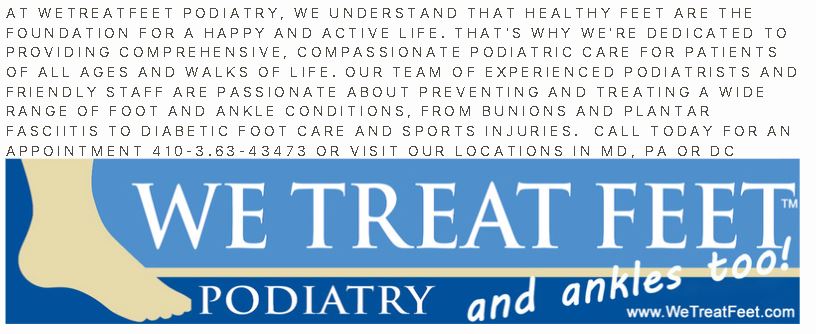What is a Bunion?
A bunion (from the Latin “bunion,” meaning enlargement) is a protuberance of bone or tissue around the joint. The enlargement occurs either at the base of the great toe or on the outside of the foot, at the base of the little toe where it is called a “bunionette” or “tailor’s bunion.”
Bunions at the base of the great toe usually begin when the big toe begins to move toward the smaller toes, often due to tight, pointed shoes. This crowding puts pressure on the joint, pushing it outward. The movement of the joint in this outward direction starts the formation of a bunion.
A common deformity of the big toe joint, a bunion occurs mostly among people who wear shoes. Women are more frequently affected with bunions because of tight, pointed, confining or high-heeled shoes. Wearing high heels is especially stressful on the joints of the foot because all of the body’s weight rests there. The foot is then forced into a narrow, pointed “toe box”, compounding the problem. Older people are also vulnerable to bunions because of the higher incidence of arthritis affecting the big toe joint.
Men and women alike can be a greater risk for development of bunions due to a genetic predisposition or due to increased motion at all the joints of the foot because of a flat foot deformity.
Bunion CAUSES:
- Poor foot posture, particularly low arch or high arch feet, cause mechanical imbalance of the joint
- Hereditary predisposition and genetic influences
- Aggravated by activity, exercise, weight, improper shoe gear fit, such as tight shoes or shoes that taper aggressively at the forefoot
Bunion SYMPTOMS:
- Pain deep inside the joint, even when non-weight bearing, while resting or deep pain felt in the joint if awakening during the course of the night
- Pain in closed shoes
- Occasionally numbness along the inside of big toe when wearing closed shoes
- Painful hard skin (callouses) on the ball of the foot under the big toe joint
Bunion SIGNS:
- Enlarged bone with redness over the area.
- Crooked big toe
- Bunions are sometimes associated with other toe deformities (hammertoes)
Bunion TREATMENT:
Early Treatment
The main goal of early treatment is to relieve pressure on the bunion and smaller toes, and to diminish the progression of joint deformities.
- Padding the bunion is an important first step, as is wearing shoes that are large enough to comfortably accommodate the bunion (such as sandals, athletic shoes or shoes made from soft leather). Stiff leather shoes may be stretched slightly for greater comfort. Tight, confining or high-heeled shoes should be avoided.
- Medications, such as nonsteroidal anti-inflammatory drugs or cortisone injections, may be prescribed to ease pain and inflammation caused by joint deformities.
- Physical therapy, ultrasound treatment, whirlpool baths or other techniques can also provide temporary relief.
- Orthoses (shoe inserts) may be useful in controlling abnormal foot movement, and may reduce symptoms for those with a painful bunion that has not yet caused a significant bony abnormality at the joint. If a systemic disease like rheumatoid arthritis or gouty arthritis is related to the bunion, appropriate medical treatment may be recommended.
Delayed Treatment
- Surgery to reduce the bump and align the big toe joint – Be Careful if you want TO DO SURGERY ON BOTH FEET AT THE SAME TIME
- The surgical procedure is done outpatient under either straight local anesthesia or twilight sleep. It takes between 60 and 90 minutes to perform. Your postoperative course will be reviewed with you by your physician if you choose surgery.
If you have any questions or would like to schedule an appointment, simply send us a note by clicking here!
Best Regards,
We Treat Feet Podiatry Team







